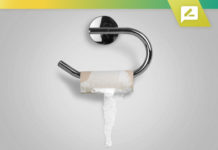Blood sugar levels are an important indicator of overall health. It's crucial to determine the optimal range for your age. While the appropriate goals differ between people based on their age, health condition, and lifestyle, knowing the common ranges gives you information about how your body functions.
It's nevertheless essential to remember that the information below is only guidelines. If you are concerned about your blood sugar levels, it's necessary to consult your doctor to conduct a thorough examination. There isn't a single “normal” blood sugar level. Your desired level is contingent on various aspects of your health and lifestyle.
Below, learn the basics about your blood sugar levels, including how they affect your general health, the normal range of levels, and warning signs of abnormal levels.
What Is Blood Sugar?
Blood sugar, commonly known as glucose, is the most important type of sugar in the body. It is derived from carbohydrates in food products. Glucose is a vital ingredient for providing energy to all cells in the body, including brain cells.
Blood sugar levels fluctuate during the day based on food intake, exercise, and sleep. Stress and hormones contribute to this. People living with Diabetes should be aware of their blood sugar levels closely to ensure that they are within the acceptable range. A doctor usually determines this.
A blood sugar level that is beyond the required range can result in serious health consequences. “When your blood sugar is excessively either too high or too low, it could have grave health effects like kidney damage, nerve damage, and heart disease,” states Brenda Peralta, registered dietitian and certified diabetes educator at FeastGood.com.
A high level of blood sugar (hyperglycemia) can cause problems such as Diabetes, cardiovascular diseases, or stroke, as she states. Low levels of blood sugar (hypoglycemia) can lead to nervousness, confusion, sweating, and vision issues. In extreme cases, blood sugar can trigger seizures and even fainting.
Why Does Blood Sugar Matter With Diabetes?
Diabetes makes it impossible or difficult for the body's system to manage glucose levels by itself. When someone has Diabetes, the body cannot produce or create enough insulin. The hormone insulin aids the body in utilizing glucose to fuel its cells. If insulin levels are insufficient, glucose can build up in the bloodstream and cause damage to organs and other tissues.
“Diabetes occurs when a body can't handle the sugar we consume in our diets every day,” says Jennifer Meller, M.D., chief medical officer of Sweetch. This health innovation company is based in Tel Aviv, Israel. “Chronically increased sugar levels could result in small and large blood vessel changes.”
As time passes, changes to large vessels can result in an increased risk of heart attack or stroke. Meller says that damage to smaller ships could result in damage to nerves, loss of vision, and kidney damage. Meller.
For those with Diabetes, keeping a healthy blood sugar level is crucial to avoid grave health problems. This means understanding the target sugar levels for different age groups and making lifestyle adjustments to meet them, as blood sugar may fluctuate up or down depending on the food you consume and when among other things.
What Is an A1C Number?
The A1C test, also known as glycosylated hemoglobin, is a common diagnostic tool for determining a person's average blood sugar levels over the last three months (90 days). It measures the degree to which a person's blood sugar level has been managed over that time.
“It's an essential element in the control of blood sugar in the case of diabetes because it provides a longer-term assessment of blood sugar levels and can aid in predicting the likelihood of developing complications due to diabetic complications,” explains Peralta.
The test utilizes a small blood sample to measure the amount of hemoglobin, a protein within red blood cells. It is a carrier of oxygen and bonds to glucose molecules. The higher the level of glucose present in the bloodstream, the more significant the hemoglobin bound to it, which the A1C test will detect test. A finger poke in the office of a doctor typically performs the test.
A1C is an acronym for “A1C,” meaning “amount of sugar in the A1C value is defined in a higher percentage, indicating more significant glucose levels within the bloodstream. A healthy A1C reading for someone who does not have Diabetes is between 4 and 5.7 percent. If The reading is deemed prediabetic if it between 5.7 percent and 6.4 percent, i.5 percent and above is consistent with the diagnosis of Diabetes.
One thing to be aware of about one's own A1C number is that it might be affected by medical conditions like anemia, which can result in an incorrect reading. This is thy looking at other numbers, like your fasting glucose, in conjunction with the A1C number is typically advised.
How Is Blood Sugar Tested?
Blood sugar levels are usually measured by glucometers, which analyze the levels of glucose present in the blood sample. A small amount of blood taken from the fingers or arm is put onto a strip of test and then placed in the glucometer. The results will be displayed on the glucometer's LCD within a few minutes.
Another method to measure blood sugar is continuous glucose monitoring (CGM), usually done by placing a disposable waterproof sensor on the side of the arm or stomach. These sensosensor basedhe manufacturer, thesetheyned using a reader and can be used for three to fourteen days, based on sensors can be used with smartphones, giving individuals and other people (such as those who care for them) the capability of observing changes in glucose levels over the past eight hours.
Patients with Diabetes generally test for blood sugar thrice daily, including before meals and snacks and 2 hours after eating.
In some instances, doctors may require additional tests, like an overnight glucose test and an oral glucose tolerance test. These tests assess glucose levels in your blood at specific intervals (fasting and after meals).
When to Test Blood Sugar
For many people who have Diabetes, the most common time to check blood sugar levels is before meals and before bed. However, a doctor might request that a patient take a blood test frequently, as long as 2 hours after eating and at the end of the evening, based on their health condition. The most effective method of determining when to test your blood sugar levels is to consult your physician, who can suggest times depending on your particular health requirements.
Other scenarios where one might want to test their blood sugar levels are:
When you experience symptoms related to low blood sugar, like sweating, dizziness, or confusion
- After eating in a restaurant or tasting new dishes
- When feeling sick
- In times of stress
- After drinking alcohol
- Before and following the exercise
- Before starting a new drug
- In the event of taking too high doses of insulin or diabetes medication
- When you take Diabetes medication incorrectly, you may be in a bind.
Normal Blood Sugar Levels By Age (Children, Adults, And Seniors)
Understanding that normal blood sugar levels vary depending on age, lifestyle factors, and health issues is crucial.
The chart below uses insight from studies conducted by the American Diabetes Association (ADA), the Centers for Disease Control and Prevention (CDC), and Johns Hopkins Medicine to illustrate the typically recommended blood sugar levels by age. Dr. Miller reviewed it.
Children and Adolescents
- Average Fasting Glucose (without Diabetes): ≤ 100mg/dL
- Fasting Glucose Level (consistent with Diabetes): ≥ 126mg/dL
- Target Glucose Range (before meals for those with Type 2 diabetes): 80 to 130mg/dL
- HbA1c (without Diabetes): < 5.7
- HbA1c (with possible prediabetes): 5.7-6.4
- HbA1c (consistent with Diabetes): ≥ 6.5
- HbA1c (target goal for those with Diabetes): ≤ 7.0
Adults
- Average Fasting Glucose (without Diabetes): ≤ 100mg/dL
- Fasting Glucose Level (consistent with Diabetes): ≥ 126mg/dL
- Target Glucose Range (before meals for those with Type 2 diabetes): 80 to 130mg/dL
- HbA1c (without Diabetes): < 5.7
- HbA1c (with possible prediabetes): 5.7-6.4
- HbA1c (consistent with Diabetes): ≥ 6.5
- HbA1c (target goal for those with Diabetes): ≤ 7.0
Older Adults
- Average Fasting Glucose (without Diabetes): ≤ 100mg/dL
- Fasting Glucose Level (consistent with Diabetes): ≥ 126mg/dL
- Target Glucose Range (before meals for those with Type 2 diabetes): 80 to 150 or 170mg/dL
- HbA1c (without Diabetes): < 5.7
- HbA1c (with possible prediabetes): 5.7-6.4
- HbA1c (consistent with Diabetes): ≥ 6.5
- HbA1c (target goal for those with Diabetes): ≤ 7.5-8.0
Note: These general guidelines may vary based on individual health circumstances. They should not be used to alter existing treatment plans without consulting a healthcare provider.
Fasting vs. Non-Fasting Blood Sugar Levels
Blood glucose tests can be used to test people for prediabetes and Diabetes.
Blood sugar testing for fasting tests blood sugar levels following eating for 8 hours. It is generally taken in the morning before breakfast. According to the following levels, fasting blood sugar levels could be a sign that someone is diabetic or prediabetic.
- Normal 99 mg/dL and lower
- Prediabetes: 100 mg/dL to 125 mg/dL
- Diabetic: 126 mg/dL or more
Blood sugar tests that aren't fasting do not require a person to avoid eating before. The non-fasting blood sugar levels could indicate that someone is diabetic or prediabetic in the following intervals.
- Normal 140 mg/dL and lower
- Prediabetes: 140 mg/dL to 199 mg/dL
- Diabetes Amount: 200 mg/dL and higher
Signs and Symptoms of Unbalanced Blood SugThere could be indicators and symptoms if
If your blood sugar is constantly either too low or too high. As per Peralta as well as Dr. Meller, the following are the most common symptoms of unbalanced blood sugar levels:
The signs of high blood sugar can be seen in:
- A rise in thirst
- Frequent urination
- Fatigue
- Vision blurred
- Slow-healing sores
- Weight loss
- Numerous infections
The signs for low blood sugar are:
- Hunger
- Shaking
- Sweating
- Rapid heartbeat
- Headache
- Dizziness
- Trouble concentrating and confusion
What Level of Blood Sugar Is Dangerous?
Hypoglycemia, also known as low blood sugar, occurs when an individual's glucose levels are lower than 70 mg/dL. A severe low blood sugar is observed when the glucose levels drop below 54 mg/dL, which can result in fainting. The condition is prevalent in those who have Diabetes.
High blood sugar—or hyperglycemia—occurs when an individual's glucose levels rise to 240 mg/dL or higher. If not treated, hyperglycemia could result in ketoacidosis, which is commonly referred to as diabetic coma.
Ketones are the waste products produced by the body when it can break down fats due to inadequate insulin. They're intoxicating in large quantities and are released through the urine of a person. If the body can't expel large amounts of ketones in urine, they could accumulate in the bloodstream, leading to high ketone levels. This could result in ketoacidosis. This is a medical emergency where ketones make blood more acidic and require immediate medical attention.
What to Do When Blood Sugar Is Too High or Low
If you are suffering from hypoglycemia, Make the following choices:
- Take four tablets of glucose
- Consuming 4 ounces or more of juice from fruit such as orange juice or apple juice
- Consuming 4 8 ounces of soda
- Four portions of candy that are hard
Patients should check their blood sugar level at least within 15 minutes following the attempt to increase blood sugar levels to determine if glucose levels have reached 70 mg/dL or more. If glucose levels remain low, you should continue any of the methods above until blood sugar levels return to normal.
People who are suffering from hyperglycemia should utilize an over-the-counter test kit that can determine the levels of ketone within their urine. If ketone levels exceed 80 mg/dL, then seek medical attention right away.
If the blood sugar levels are elevated but tests in the urine show normal levels of ketone, The following options could be able to assist in lowering blood sugar levels:
Keep hydrated. Dehydration can cause your blood sugar to be more concentrated, leading to increased glucose levels. A higher water intake will help control blood sugar levels by adding more water to the bloodstream.
Exercise more: Physical activity makes your body more tolerant to insulin. It also lowers blood sugar levels for up to 24 hours following exercise. If you suffer from ketones, avoid exercising. This can cause your blood sugar levels to increase even more.
Take care of stress. It can increase glucose levels. Learning healthy ways to deal with stress via therapeutic exercises (such as listening to music or taking a walk) can aid in reducing high blood sugar levels.
Sleep enough: Studies show that lousy sleep quality can negatively impact the body's ability to regulate the blood sugar level. Try to get between seven and eight hours of rest each night. Consult your doctor in case you think you might be suffering from the symptoms of a sleep disorder.
Calculate carbohydrates. Carbohydrates can be broken down into glucose during digestion, which can increase blood sugar levels. Counting carbohydrates can help control blood sugar levels and ensure that people with Diabetes receive sufficient insulin.
When to Talk With a Doctor About Blood Sugar
Diabetes is a severe disease. If you're worried about your sugar level, speak with your doctor. Your doctor may order tests to confirm the diagnosis of prediabetes or Diabetes and give treatment recommendations. They might also suggest lifestyle modifications that help maintain your blood sugar within the recommended range.
Monitoring and controlling blood sugar levels is crucial to keeping your health in good shape and avoiding the long-term repercussions of Diabetes. Proper care and regular check-ups make regulating blood sugar levels feasible.
Frequently Asked Questions (FAQs)
What is an average blood sugar reading immediately following eating?
Normal blood sugar levels occur within a couple of hours after eating. The average is 180 mg/dL or less for non-pregnant women with Diabetes, and it is 140 mg/dL or less in pregnant women suffering from Diabetes, as per the American Diabetes Association.
What is the average blood sugar level for the early morning?
Blood sugar levels that are healthy before eating vary between 80 and 130 mg/dL in the morning.
What is the ideal blood sugar range for a pregnant woman?
The American Diabetes Association recommends the following guidelines for pregnant women who test their blood glucose levels
- Fasting: 95 mg/dL or less
- 1 hour after eating: 140 mg/dL or less
- After eating for 2 hours: 100 mg/dL or less
Do I have to worry about my blood sugar levels even if I do not have Diabetes?
For people who don't have Diabetes, tests for blood sugar are generally not necessary. Suppose you do have certain predisposing factors to prediabetes, like obesity or a large body mass of more than 45, or having a close family member suffering from the type 2 form of Diabetes. In that case, you should consult with your physician to determine whether you should examine your blood sugar.
Why is my blood sugar so high in the morning but regular throughout the day?
Blood sugar levels are high in the early morning, which can be due to the sunrise phenomenon, which is a result of waning insulin levels and the Somogyi effect.
In the early morning, the liver enhances sugar production, which gives the body enough energy to get up. This triggers the pancreas to release insulin to keep blood sugar levels under control. However, people with Diabetes may not make enough insulin to counteract the increase in blood sugar levels. This is often referred to as the dawn phenomenon, which can affect nearly half of patients with both type 1 and type 2 diabetes.
Waning in insulin happens when the levels of insulin in an individual are too low over the course of a night, which causes the blood sugar level to increase. It can happen for various reasons. It can be caused by insulin pumps that produce too little basic (background) insulin throughout the night or taking too little of the long-acting dose of insulin. The loss of insulin can also happen when people inject long-lasting insulin too soon.
The Somogyi effect refers to an individual's blood sugar levels dropping too low over the course of the night. The body can produce additional glucose to compensate, resulting in elevated blood sugar levels in the morning.













![Bowflex Max Total: 2024 Fitness Workout Exercise Machine [Review] Bowflex Max Total: 2020 Equipment Review For Complete Upper and Lower Body Workout](https://www.advancedliving.com/wp-content/uploads/2019/12/Bowflex-Max-Total-218x150.jpg)


